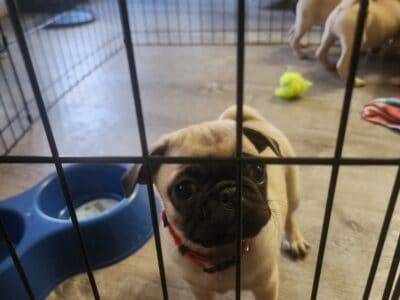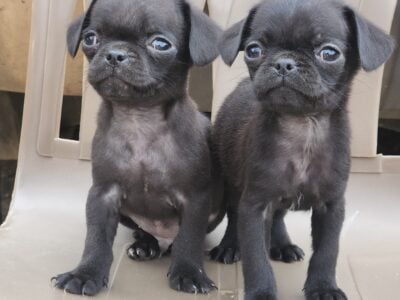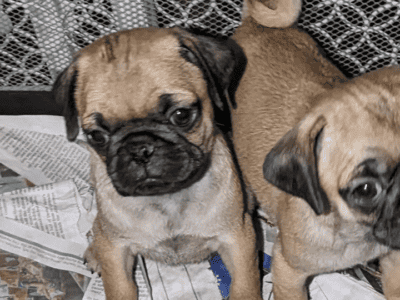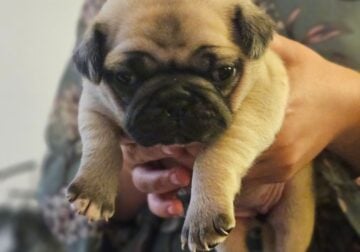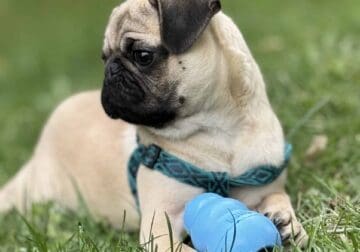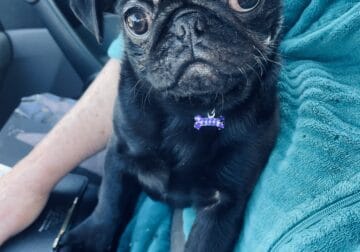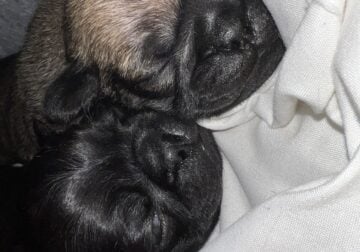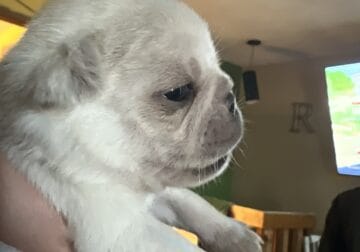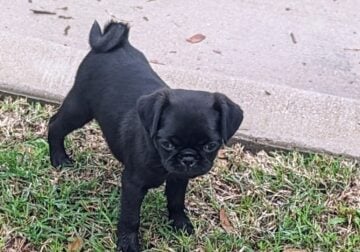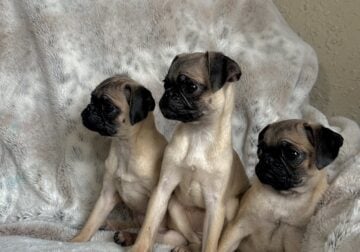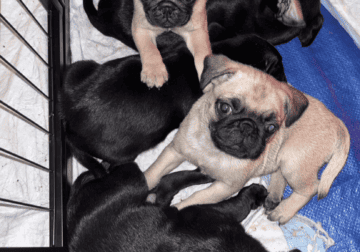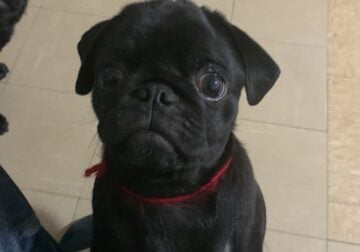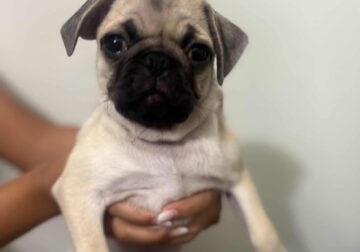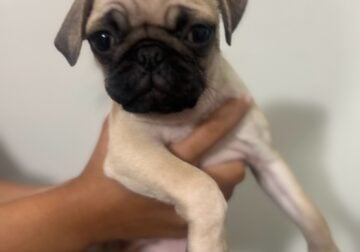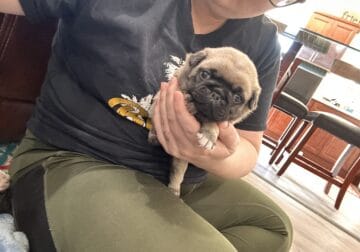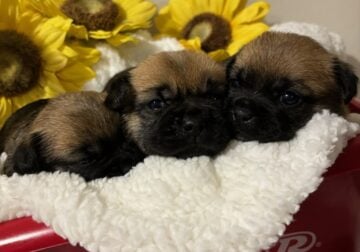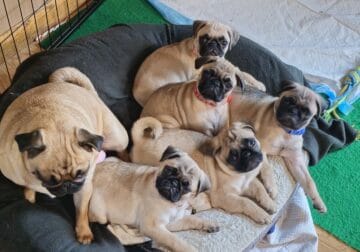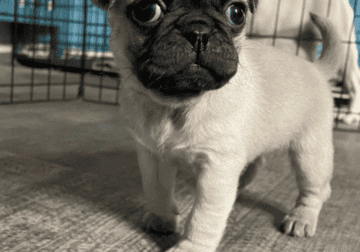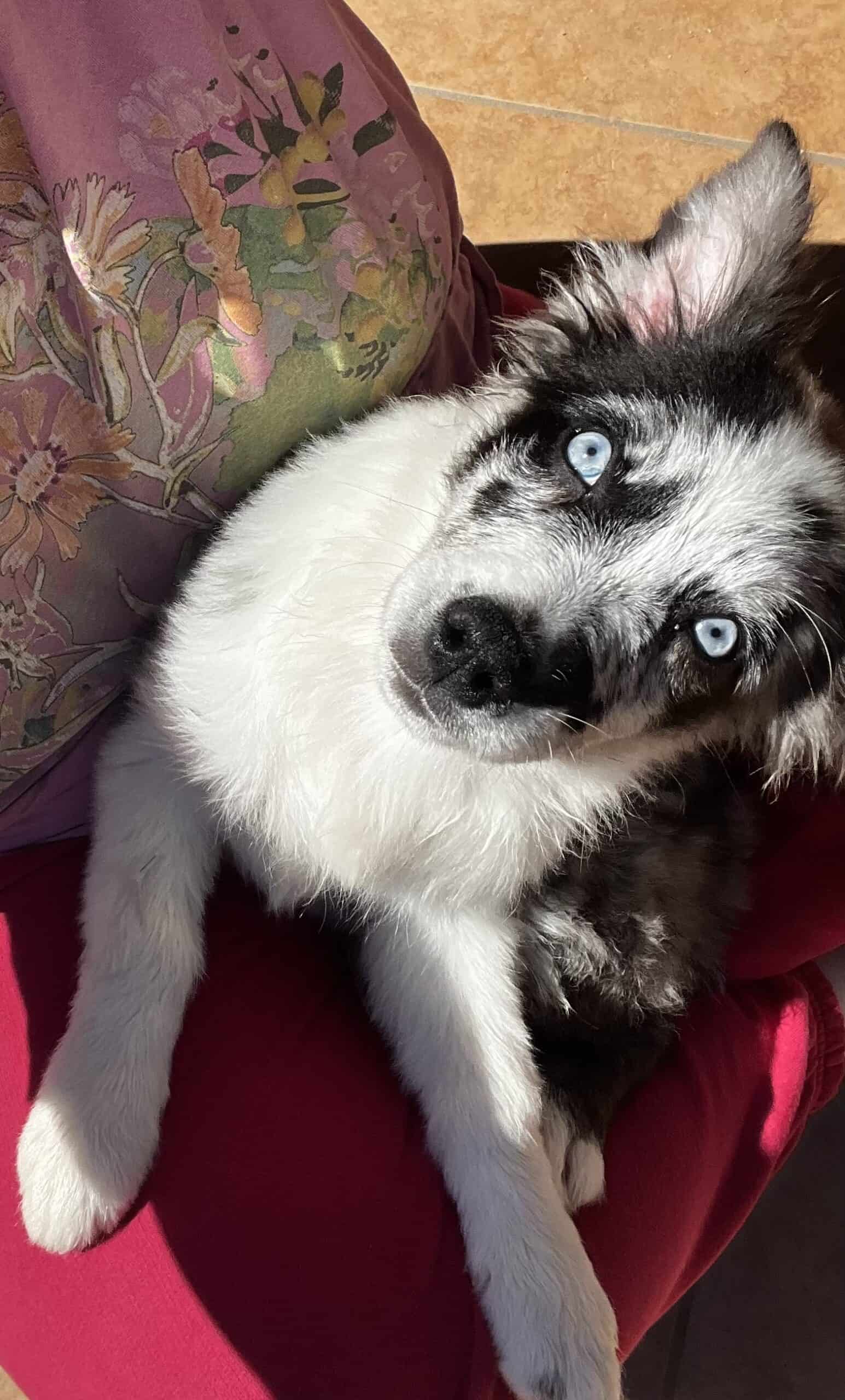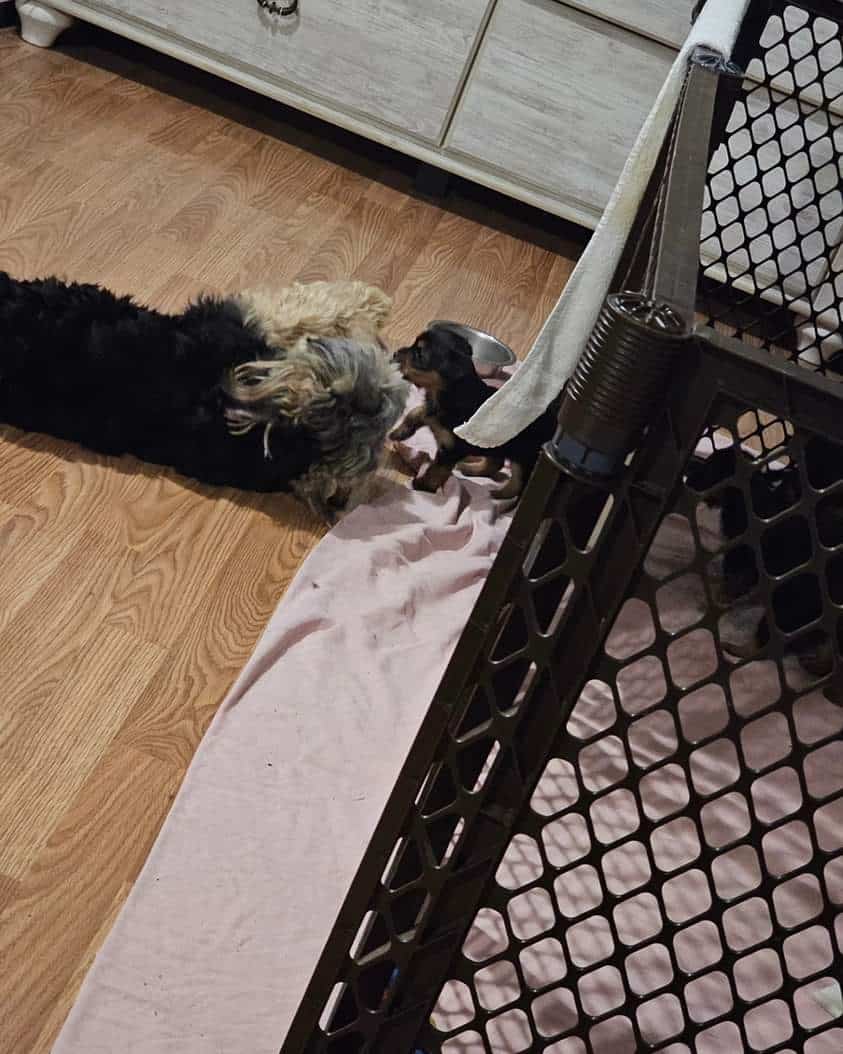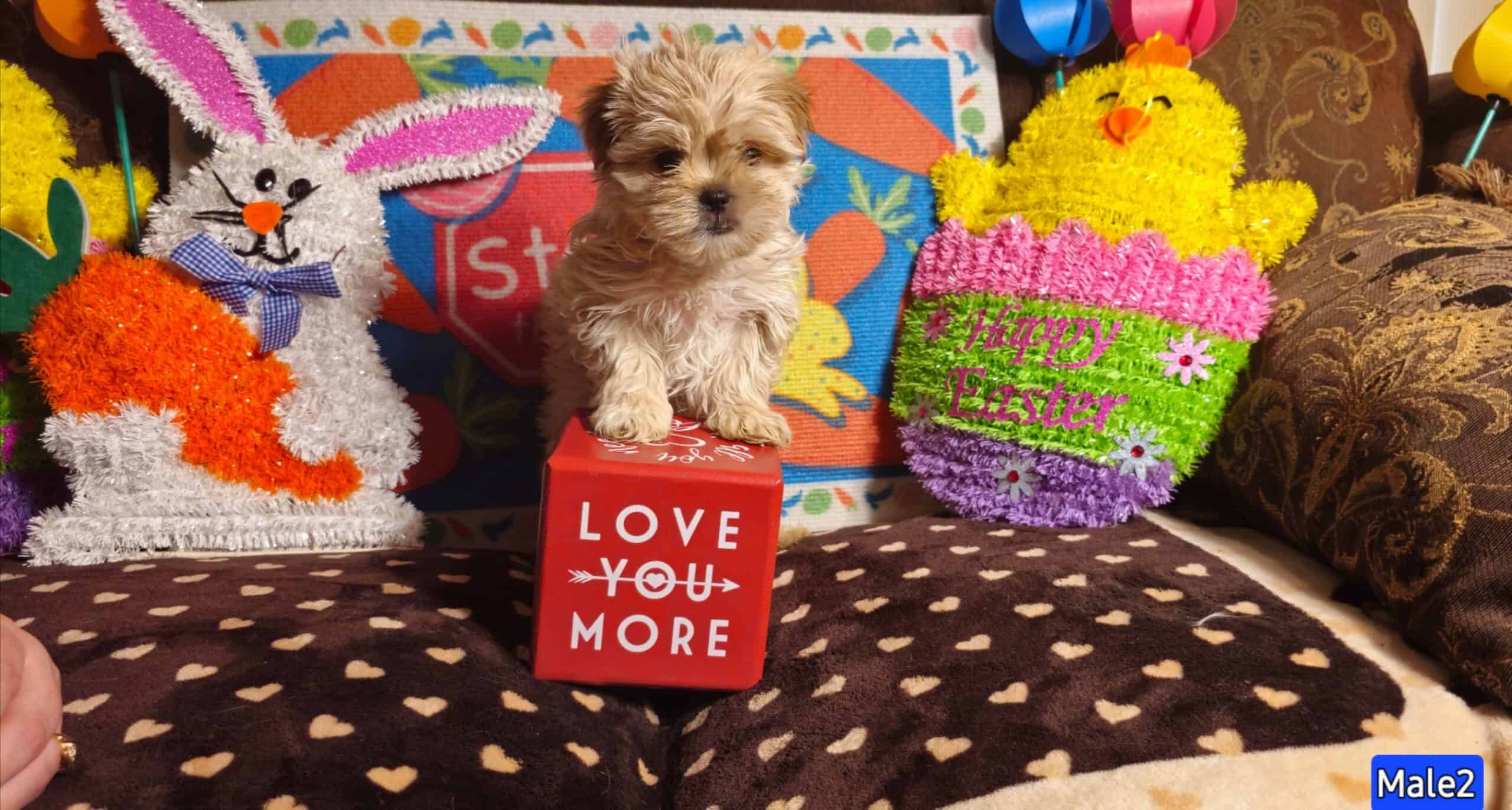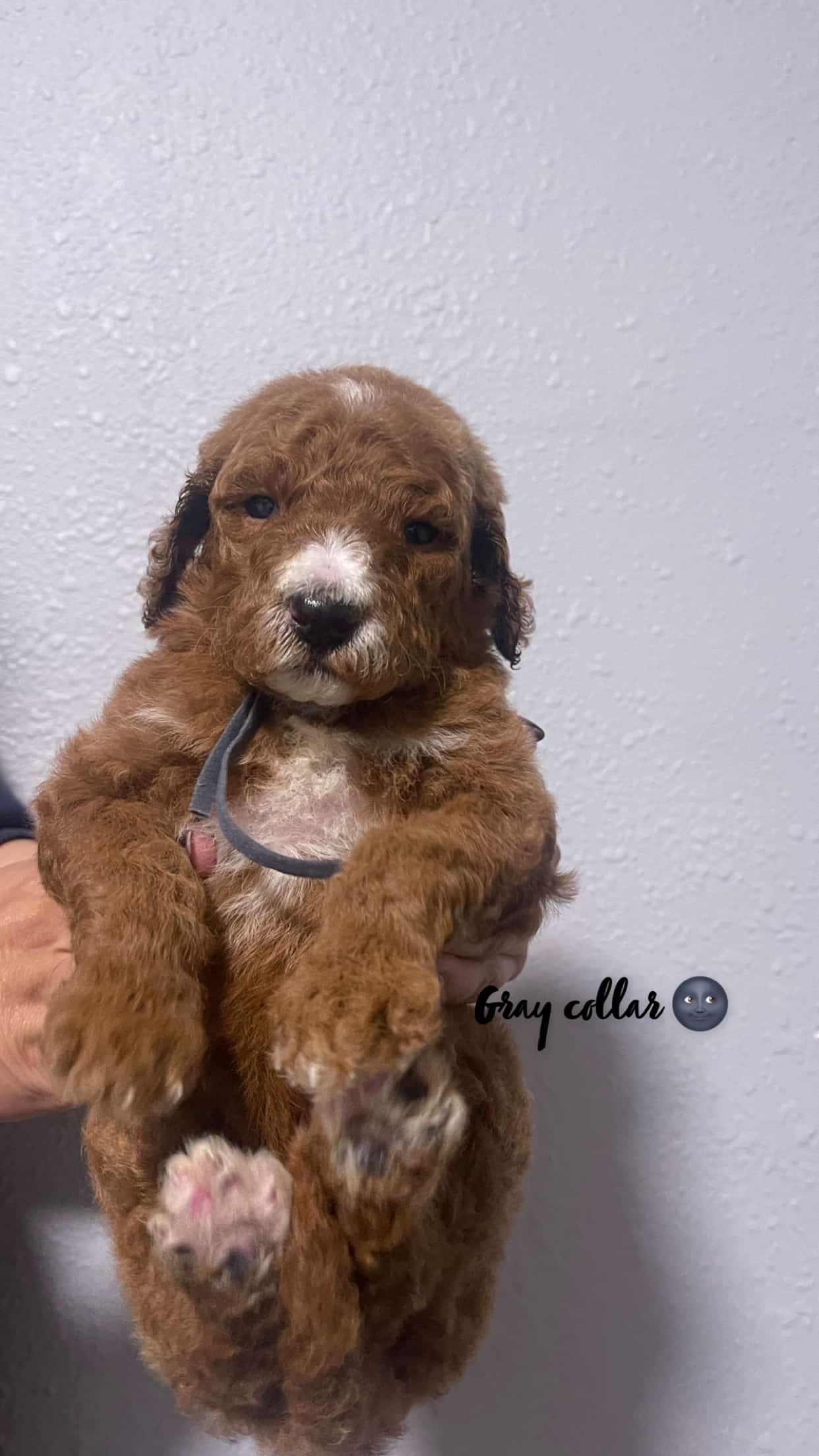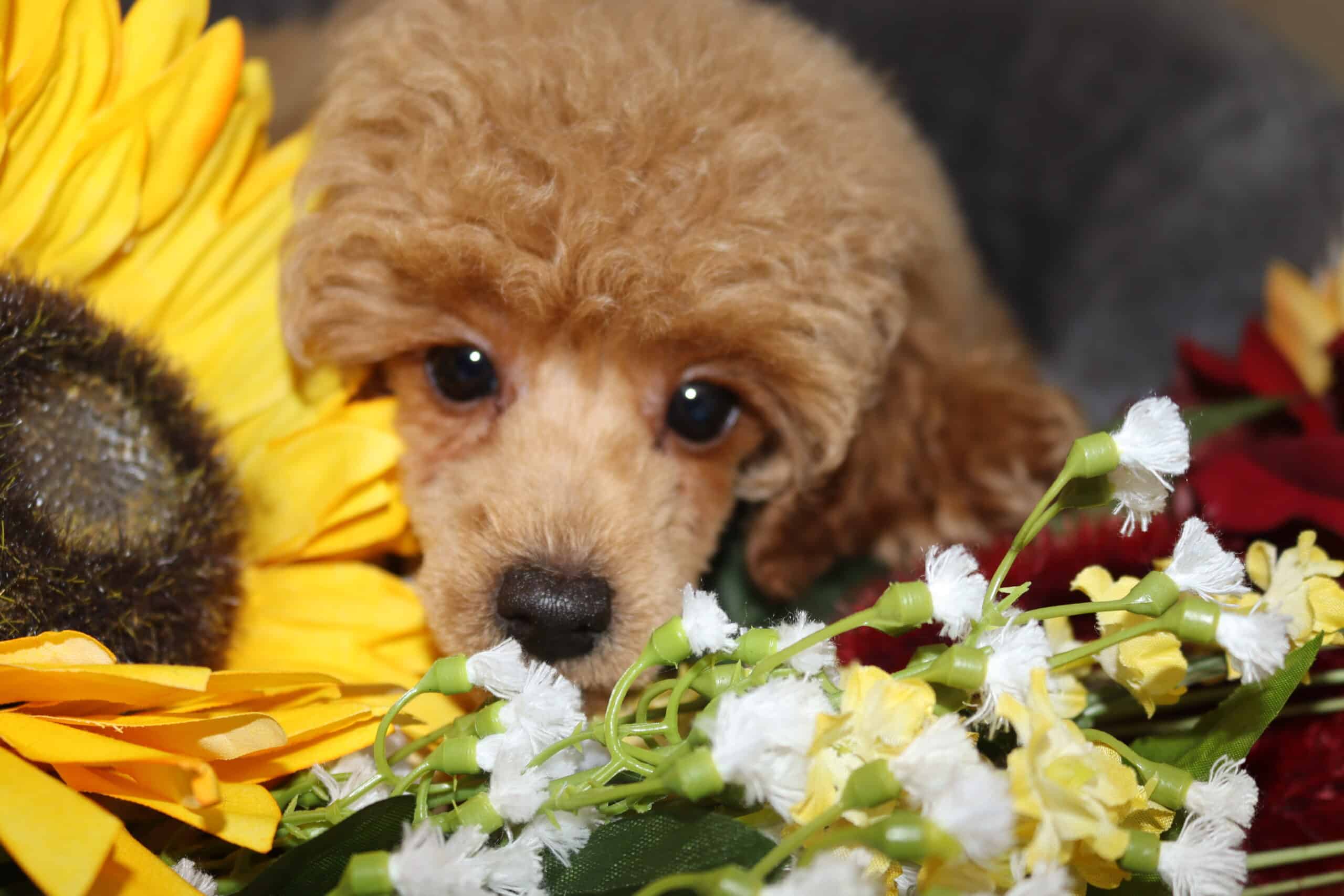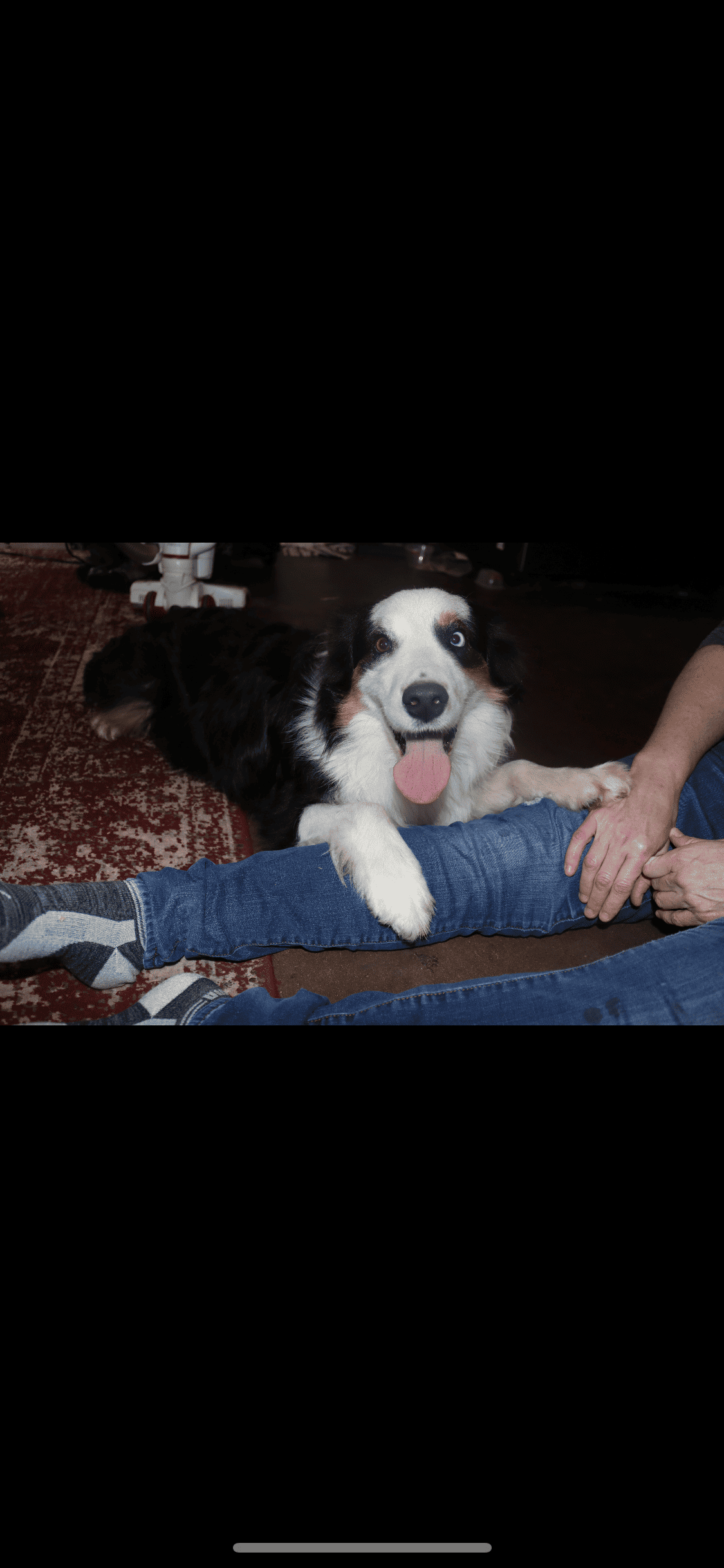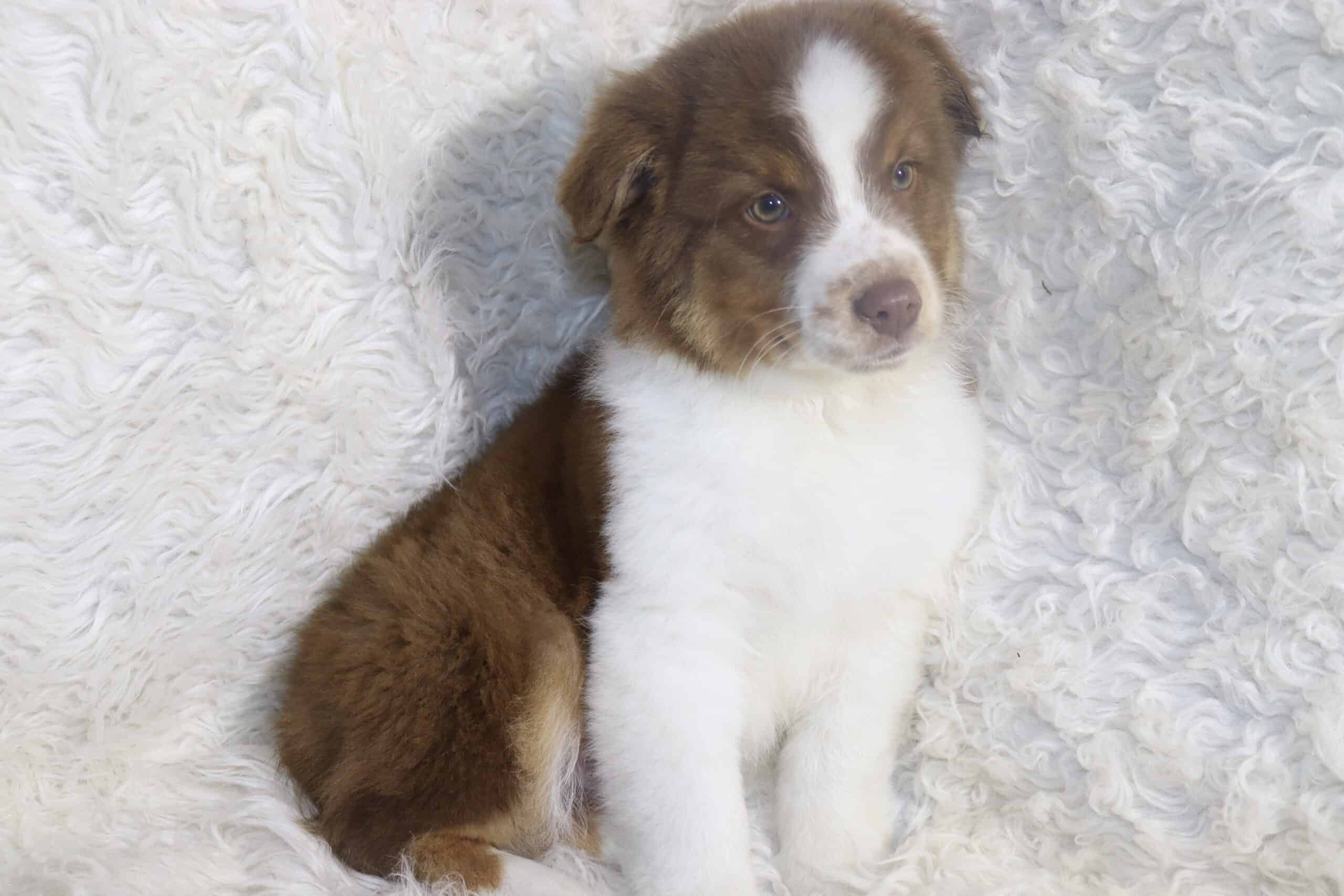Popular Filters:
Pug Puppies for Sale $200
Pug Puppies for Sale $400
Pug Puppies for Sale under $500 near me
Small and in Charge of Your Heart: Pug for Sale
If you want an affectionate companion that resembles a monkey with its impish looks and childish pranks, you cannot overlook the Pug. Originating in China to be a pampered and cherished pet, your new Pug would do just that. Pugs are convenient for many families with their suitability for apartment living, good nature around children and other pets, low exercise requirements, and low-maintenance coats.
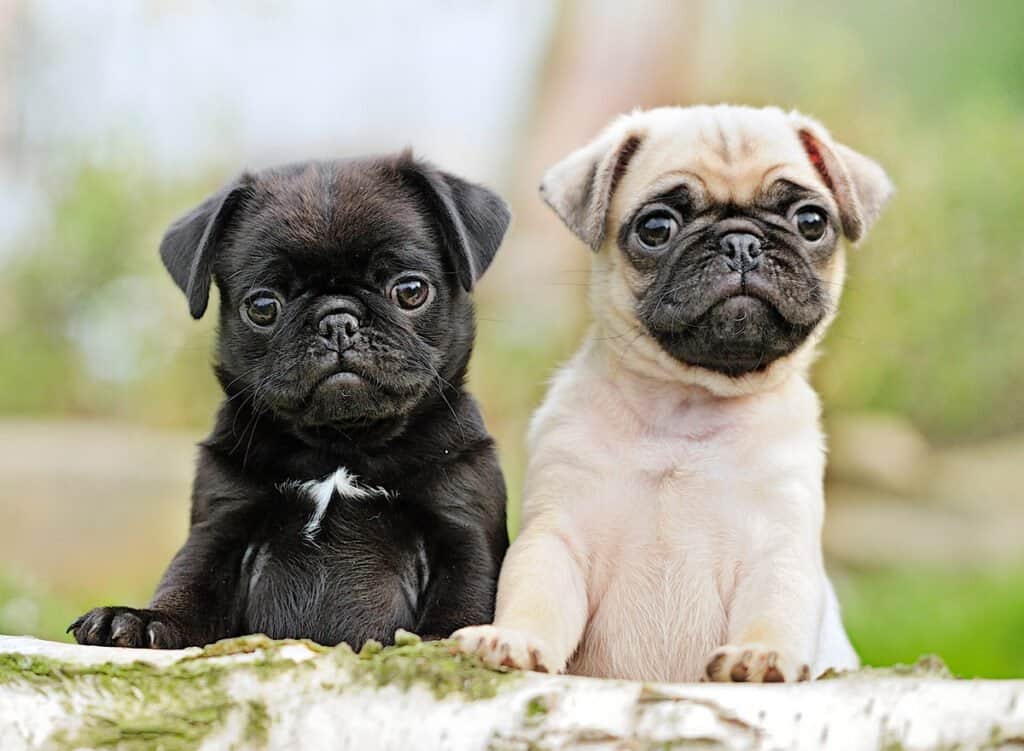
Overview of Pug for Sale
The Pug has a longstanding history as a companion dog. Once a pet of royalty, the Pug’s distinctive physical attributes and winning personality have ensured its enduring popularity around the world.
Brief History
Lo-Sze was the name of ancient Pugs that existed in China since before 400 BC and perhaps as early as 850 BC. Along with the Shit Tzu or Lion Dog and the Pekingese, Pugs were treasured pets of Chinese Royalty, notably during the Han Dynasty. All the little dogs were selected for their flat faces. Pugs also graced the monasteries of Tibet alongside their Buddhist monk owners. Quite some time passed before Pugs were allowed outside of China besides the occasional gift. Pugs made it to Europe via the Dutch in the 1500s and their popularity took hold in Holland. Pompey’s heroic act of warning the King of Orange of Napoleon Bonaparte’s impending attack is largely responsible for their spread across Europe and their explosion in countries like the UK, Italy, Spain, and France. As with so many other breeds, England put the finishing touches on the Pug, reintroducing Chinese lines in the early 1860s. Around the mid-1860s, Pugs made their way to America and joined the AKC in 1885.
Pug Puppies for Sale Sought for Adorable Looks
Pugs have overwhelming appeal because of their large round eyes and massive heads, greatly shortened noses, facial wrinkles, and small statures. On average, a Pug is 12 to 14 inches tall at the shoulders and weighs 15 to 18 pounds. Females are a bit smaller than males with less brawn. Chinese breeders selected the facial wrinkle pattern over several generations. Their preference is for a resemblance to the Chinese characters that represent the word “Prince.” A pug’s body type should be the picture of symmetry with a cob appearance (square frame with stout build). The ears may be rose, but button is preferable. A Pug for sale has a slightly arched strong neck, wide but not deep chest, and a level back. She should have a tightly or double-curled tail. Limbs and hindquarters are noticeably sturdy and powerful. A Pug has a jaunty and commanding fluid gait.
More In-depth Features of Pug for Sale
When you visit litters of “Pug puppies for sale near me,” you will undoubtedly search for qualities that will emerge as your dog becomes an adult.
Coat
While you can tell what color Pug puppies for sale will be, their full coats do not come in for about six months. Pugs are moderate shedders with a short glossy double coat that lies flat. The undercoat is not very dense, and a black Pug may not have one at all. Unlike many of the working breeds, Pugs have soft fur.
Colors
Pugs should be fawn or black. Fawn Pugs have a black facial mask that includes the ears, moles, muzzle, up into the forehead, and a trace down the back around the hips. You will not, of course, be able to see the dark mask on a black Pug. With the presence of black and fawn in the breed’s DNA, it is possible to produce a rare brindle Pug. Brindle dogs have a base fawn coat with irregular bands of black showing through resembling stripes. Brindle only accounts for about 1% of the color pattern you will see in Pugs. Since a brindle Pug is not an acceptable color to major registries, people do not actively breed for the pattern. Many experts will assume a brindle Pug is a crossbreed until proven otherwise. Although the AKC only recognizes a fawn or black Pug, the Canadian registry accepts apricot and silver fawns. While more common than brindle, apricot and silver fawn are exceedingly rare Pug colors that only account for about 7% of the population. Over 70% of Pugs will be fawn and 22% black.
Fabulous Disposition
Although in the Toy group, nothing about the Pug suggests weakness, fragility, or faintness of heart. Pugs are as self-assured as a dog five times their size with plenty of charisma. With almost clownish antics, Pugs enjoy being the center of attention and the opportunity to gain your approval. The breed is loving and loyal but friendly with strangers. Many do bark at intruders, making them effective watchdogs. Pugs are even-tempered and playful, great companions for both children and other dogs. Your cat is likely to appreciate a Pug’s company as well since the breed tends to be quite sociable and gentle. Their sturdiness makes Pugs more resilient to young children than other Toys. You still need to exercise extra care with puppies.
Intelligence and Training
Pugs rank as average in intelligence among their canine peers. Not meant for work, Pugs have a high degree of emotional intelligence and willingness to please. These qualities make them a joy to train even if they need additional repetitions to learn voice commands. Pugs are sensitive and do not take well to yelling, loud reprimands, harsh training methods, or being alone for extended periods. A Pug needs positive reinforcement, rewards, and validation to learn at full capacity. He also needs constant human companionship. Socialization is key to preventing anxiety and fearfulness. Mental stimulation is paramount to prevent destructive behavior secondary to boredom.
Health
Toy dog issues and brachycephalic challenges plague the Pug’s health. Their small size means they are better off than Bulldogs. They live from 12 to 15 years.
Brachycephalic Complex
Brachycephalic literally means short head and pertains to an entire group of dogs bred for flat faces or an exaggerated short muzzle. It includes but is not limited to French and English Bulldogs, Boston Terriers, Pugs, and the Japanese Chin. Pugs are at risk of developing brachycephalic airway obstruction. Brachycephalic breeds, including your Pug, are heat and exercise intolerant. Pugs can neither cool themselves effectively in the summer nor stay warm in the winter. Not only do Pugs’ coats tend to be thin, but a shortened nasal sinus provides no time to pass cooling currents through the dogs’ respiration. Scientists are working on a DNA test that will diagnose those individuals that have the worst signs of obstructive breathing to exclude them from breeding.
The AKC recommends that you acquire Pug puppies for sale from breeders who have enlisted a veterinarian to screen their dogs’ hips, eyes, and eyes. Another strong recommendation is a DNA test for Pug Dog Encephalitis to identify any carriers. You may not have access to screening tests and certification records from shelters or rescues.
Care of Pugs
Pugs require a lot of love and attention but are low-maintenance in other areas of care.
Grooming
Brushing once or twice a week and a monthly bath will suffice to keep your Pug’s skin and coat healthy and shiny. Allergic dogs are an exception as they may require medicated baths every few days. Focus on looking at the skin and ears for a rash or abnormal redness or discharge every couple of days. Trim the nails once a month. Pugs need special attention to their facial wrinkles. Make sure to gently wipe any skin folds daily or every other day. There may also be wrinkles around the tail.
Exercise
Your puppy will likely be very active and energetic, but as she gets older, liveliness will be in short bursts. Although your Pug may have little to no evidence of breathing abnormalities, exercise in temperatures above 80 degrees Fahrenheit or 20% humidity should be avoided at all costs. You should also skip the long walks or playing marathons. Short sessions that accumulate to 30 to 40 minutes a day are sufficient for your Pug. Lower the physical stress by interspersing running and playing with training and other mental exercises.
Feeding
Since Pugs are prone to obesity and love food, you need to monitor your pet’s diet strictly. Animal sourced fats and proteins should still comprise much of your Pug’s diet. Restricted carbohydrates may help your Pug maintain his weight easier. Consult with your veterinarian about the best diet whether it be commercial wet or dry food or a raw or homemade recipe. Amounts vary depending upon your Pug’s age and activity level. If you calculate calories, you are looking at 25 to 40 calories per pound. Pugs require more fuel than some breeds because of their small size and increased energy needed to breathe. Another option is to feed by the percentage of body weight. You would feed a puppy 4 to 6% of its body weight and an adult 2 to 3%. Bodyweight is by the pound and food by the ounce.
Pug’s Influence
The Pug has been around for a long time and has no doubt contributed to other breeds. Among the likeliest of candidates is the French Bulldog. In more recent times the breed has been central to many designer dogs in the interest of making a healthier or smaller pet.
- Frug – French Bulldog
- Puggle – Beagle
- Bugg – Boston Terrier
- Chug – Chihuahua
- Hug – Siberian Husky
- Daug – Dachshund
Teacup Pug
What may become important if you are looking for a Teacup Pug is the distinction between a purebred and a designer dog. Chihuahuas and Yorkies are popular breeds to miniaturize many dogs, but the result is a hybrid that may not have the distinguishing features of a purebred Pug. True Teacup Pugs are only six inches tall, weigh two to four pounds, and are the result of a dwarf gene. They can suffer from exacerbated breathing difficulties, low blood sugar, heart failure, and dehydration. Not to be taken lightly, a Teacup Pug’s health challenges shrink its life expectancy to six to ten years. However, their cuteness outweighs the risk for many loving owners.

